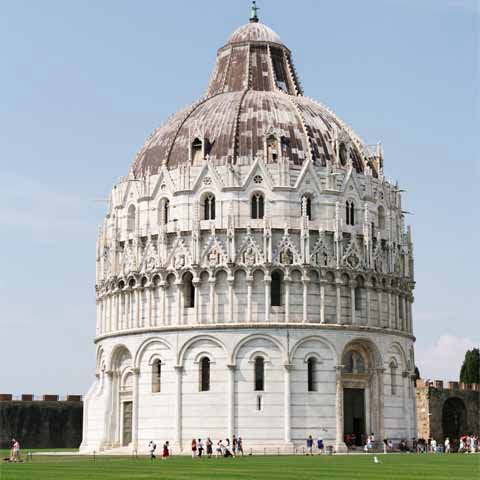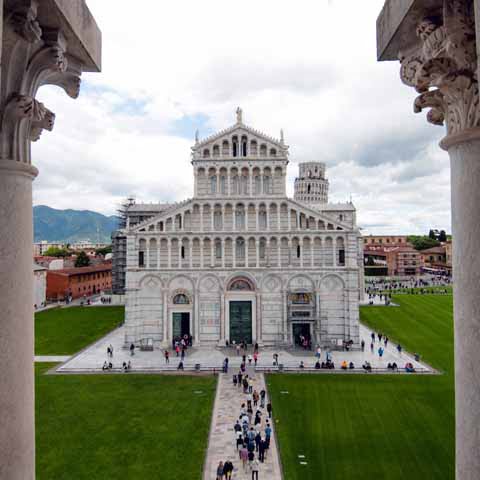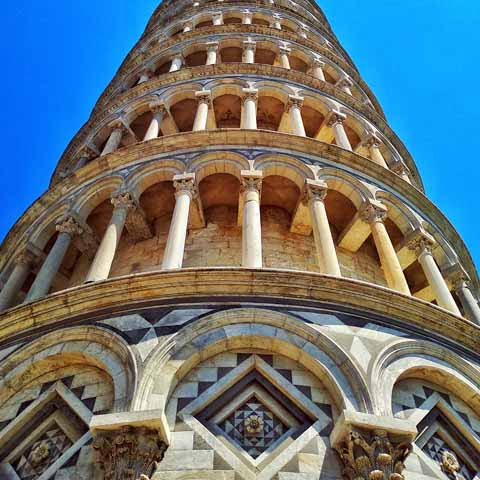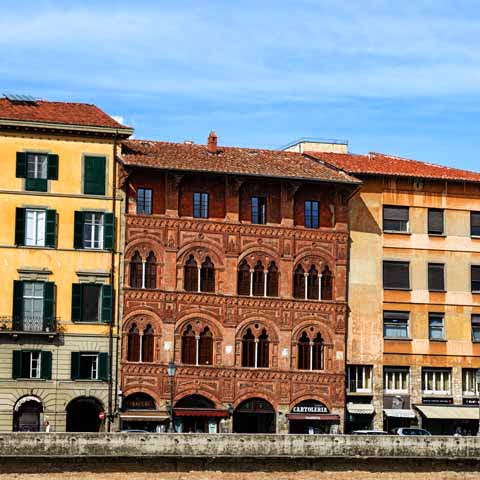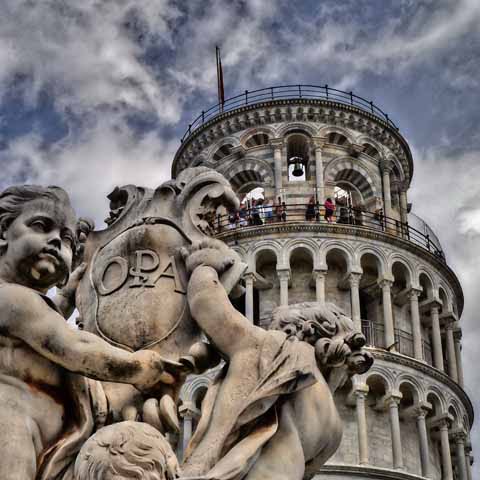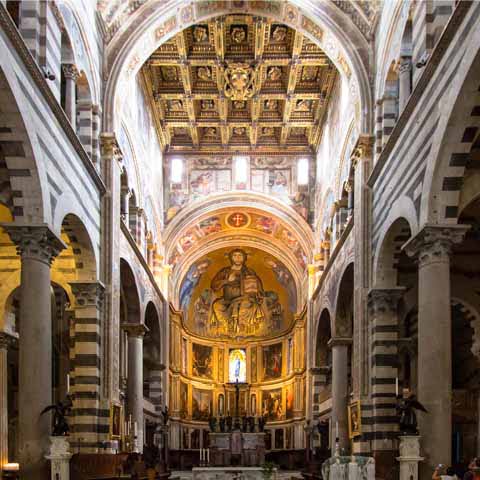In the early Middle Ages, Pisa thrived as one of Italy’s four major Maritime Republics. Along with Venice, Amalfi, and Genoa, the city was dominant from both a military and commercial standpoint. Now, Pisa is well-known for being home to one of the most recognizable symbols of Italy – the iconic Leaning Tower. Drawing more than one million visitors each year, this incomparable site has solidified Pisa as a premiere travel destination which rivals the popularity of Italy’s major cities of Rome, Venice, and Florence. Luckily for travelers, Pisa is a compelling city that offers more than meets the eye, including a variety of worthy sites, an array of Romanesque, Gothic, and Renaissance architecture, and a unique charm that transcends the Piazza dei Miracoli – the square in which the Leaning Tower sits.
Located in the Tuscany region of Italy, Pisa is the capital city of the Province of Pisa and features the Arno river – famous for being the main river in Florence – which crosses the city just before emptying into the Ligurian Sea.
Home to over 90,000 residents, the city is known for its architecture. Many spectacular bridges straddle the Arno, offering beautiful views. Literature’s greatest poets, such as Shelley and Leopardi, once referred to the view from the Ponte di Mezzo bridge as the best sunset view in the entire world. In addition, Pisa features everything from Gothic churches to Renaissance squares to a handful of Medieval palaces.
While much of the elegant buildings and architectural features of Pisa were funded by the city’s days as a maritime power, and education also served as a primary fuel for the local economy. Today, along with tourism, education continues to define the city. The University of Pisa, one of the most important universities in all of Italy and ranked in the top 500 universities in the world, draws students from across the country, creating a culture of education throughout the city. Pisa is also home to Scuola Normale Superiore di Pisa and the Sant’Anna School of Advanced Studies, which together with the University of Pisa form the Pisa University System. These universities create a vibrant scene throughout the town, including a variety of cafés, restaurants, bars, and lively nightlife which feature more locals than visitors.
Though less densely packed than Florence – a city which Pisa is so often compared to – the town of the Leaning Tower offers culture, education, and some of the most incredible locales in Italy. One of the most interesting sites, of course, is the home of the Leaning Tower, Piazza del Duomo (also known as the Piazza dei Miracoli or Square of Miracles), which also features the city’s Cathedral and Baptistery.
GEOGRAPHY & CLIMATE
The city of Pisa is located in the Northwest area of Tuscany, positioned along the Arno river. The town is the capital of the Provincia di Pisa – a province that occupies a good portion of the coast and features towns such as Marina di Pisa, Tirrenia, and Calambrone. The entire province and the city of Pisa features a geography comprised mostly of plains. However, near the province’s border with Lucca, a series of hilly and mountainous areas can be found.
The climate of the city of Pisa is defined as a mixture of humid subtropical and Mediterranean. Winters are mild while summers can be very warm with the occasional rain shower. Rainfall in Pisa is at its peak in autumn, while spring is temperate.
WHEN IN PISA
A must-see is the building that brings most travelers to Pisa – the Leaning Tower. Built in the twelfth century, the lean was unintentional. The result of an inadequate foundation on ground that was too soft to support the weight of the structure, the tilt started out small and hardly noticeable, but over time became worse and worse. The tower was eventually stabilized, but the characteristic lean remains as a photo opportunity and major site to see for travelers from all over the globe. Visitors can even climb to the top of the tower, which is approximately 185 feet tall, depending which side one measures.
The Leaning Tower is in the Piazza dei Miracoli (Square of Miracles) – an UNESCO World Heritage Site, ancient civic center, and complex set atop a vast green field. Given its nickname by famous Italian poet Gabriele D’Annunzio, the Square of Miracles offers visitors stunning beauty and incredible monuments available throughout. Home to such buildings as the Baptistery and the Duomo, as well as sites like the Monumental Cemetery and the historic Santo Spirito Hospital, the square is always bustling with travelers and locals – often students. Regardless of the crowds, the square is a truly magical place to visit, especially on bright, sunny days.
Pisa boasts a lovely and historic city center, which is perfect for travelers to walk and explore. The best walkable area leads from Cavalieri Square to Corso Italia. This path passes through Borgo Stretto – filled with shops and cafés to enjoy – and over a romantic, historic bridge that crosses the Arno river, Ponte di Mezzo. When travelers arrive at Corso Italia, they can shop local boutiques and enjoy the area like the locals do. This walk, which surrounds travelers with the charming atmosphere of Pisa, passes through the heart of the city and represents the typical Sunday morning for a Pisa local.
And yet, Pisa’s offerings extend beyond art and culture. Nature lovers will enjoy exploring the surroundings during long walks or bike rides. While in Pisa, travelers will find parks throughout the city center and nature reserves on the outskirts.
To escape the city of Pisa for a day, consider a short trip to the nearby towns of San Miniato and Volterra – spectacular Medieval towns featuring amazing architecture and rich histories. Or, visit the nearby San Rossore Estate, which spans nearly 20 square miles. The estate, considered to be the largest pine forest in Europe, is part of the larger protected natural area called the Park of Migliarino, San Rossore, and Massaciuccoli, which extends across the Tuscan coast. The flora is diverse with numerous species of trees, including beech, poplar, and oak, as well as rare plants and animals. Just a short drive from the center of Pisa, the park is a natural oasis that can be explored on foot, by bike, or even on horseback.
Thanks to its characteristic Leaning Tower, the Tuscan city of Pisa has gained international fame. Yet, travelers who take the time to explore this historic city beyond the Piazza dei Miracoli will find fascinating museums, remarkable architecture, and tranquil nature reserves.
Travel Guides
The Tuscany Region of Italy
The Cities of Tuscany, Italy
